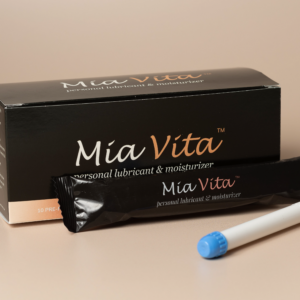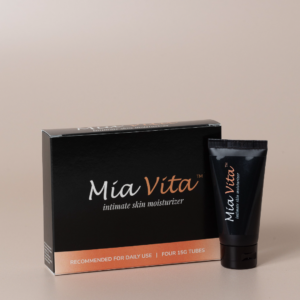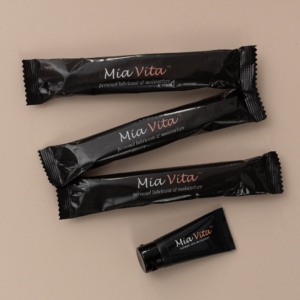
Experiencing vertigo, whether for the first, second, or third time, can disrupt your day and raise a host of questions. Questions you may have spent time typing into search, asking friends if they’ve encountered similar sensations, or wondering whether there’s something else at play.
Vertigo becomes more common during and post-menopause and disproportionately impacts women later in life. So, if you’re wondering where these spinning spells are coming from, stay tuned. We’ll explain what vertigo is (and isn’t), its most common causes, and how you can start managing your vertigo symptoms.
What is vertigo?
Vertigo describes the sensation of spinning round and round while your body remains still. Dizziness, in contrast, refers to feeling lightheaded or unsteady.
You can think about vertigo as the teacup ride at the county fair and dizziness as the sensation you experience after stepping off. Similar, but not the same.
Vertigo is also a symptom of a particular condition, not a disorder or condition itself, though that’s a frequent misconception.
What are the different types of vertigo?
Most people with vertigo develop one of two types: peripheral or central. Peripheral vertigo, the most common type—about 80% of all vertigo cases—concerns your inner ear. Your inner ear helps control your balance, and any alteration or injury to it can trigger vertigo.
Central vertigo causes the remaining 20% of vertigo symptoms and occurs due to a disease or illness of the brain, such as a stroke or tumor.
If you experience short and intense episodes of vertigo, it’s likely peripheral. Both peripheral and central vertigo often occur without warning, though if you move your head too fast, you’re more likely to trigger vertigo. It’s always a good idea to check in with your doctor if you’re experiencing increasing or more regular bouts of vertigo.
What causes vertigo?
Let’s get to the bottom of some of the most likely causes of vertigo.
Benign Paroxysmal Positional Vertigo (BPPV)
Benign paroxysmal positional vertigo (quite the mouthful), or BPPV, causes most peripheral vertigo symptoms. If you’re lying down and suddenly raise your head or turn your head too fast, you can trigger BPPV. But why does this happen?
Each of us have otoliths (another vocabulary word), also known as ear stones, and tiny crystals made up of calcium deposits in our inner ear canal. They are responsible for communicating changes in head position to the part of your inner ear that senses head movement. When these otoliths and crystals get knocked out of place, vertigo often follows.
Vertigo and Aging
As we age, the otoliths and crystals in our ears are more likely to come loose without the precedent of sudden head trauma. Women also experience vertigo at greater rates than men, almost 3:1, but only later in life. The rates of vertigo in younger women and men are about the same.
Vertigo and Meniere’s Disease
Another common cause of vertigo is Meniere’s disease, the build-up of too much fluid in your inner ear. People with Meniere’s disease can experience nausea, tinnitus (ringing in your ears), and hearing loss from too much fluid pressure.
Vertigo and Stress
Some researchers suspect causes of vertigo also relate to rising levels of stress. However, it’s a bit like the chicken and the egg:
Vertigo can cause someone to feel more anxious due to its disorienting and sudden nature. Anxiety may cause someone to feel lightheaded or dizzy, but according to recent studies, it cannot induce an episode of vertigo.
Why do women experience vertigo more often than men?
It’s not your imagination: menopausal women do experience more vertigo. Although anyone can develop BPPV, it is most common in women between 50 and 70—in other words, during and post-menopause. As our estrogen levels begin to fluctuate and steadily decline, the more at-risk we become of developing vertigo, specifically BPPV.
Researchers continue to study the connection between our hormones (estrogen) and vertigo but have yet to determine the exact mechanism that contributes to vertigo. In one study, researchers did find menopausal women with BPPV had less estrogen than women that did not experience BPPV, but not why that was the case.
At the moment, the running theory relates to estrogen’s potential influence on the cells in our inner ear canal and its ability to disturb our ear stones and calcium crystals as it decreases.
How can you manage vertigo?
What do you do when something falls off a shelf or gets knocked over? If you’re like most people, you either pick it up and put it back or move it out of the way. Treatment for vertigo often works the same.
Physical therapists use special maneuvers to dislodge the vertigo-inducing particles (otoliths and crystals) when these components of your inner ear are disturbed. The most common maneuver to reduce vertigo, the Epley maneuver, involves turning your head at specific angles and holding it in different positions to move the particles out of the canal.
Similar maneuvers and physical therapy exercises can also help you improve your overall balance, which can reduce your vertigo symptoms, even over other types of treatment.
Another effective treatment for vertigo is gaze stabilization. Gaze stabilization, or “focus” exercises, encompass a variety of head movements while maintaining a steady gaze to help train your brain to handle momentary dizziness. It’s not always practical for BPPV, but it can help reduce the severity or length of episodes for other types of vertigo.
You can also make lifestyle adjustments to help manage your vertigo. Cutting back on caffeine and alcohol, avoiding flashing or intense lights, and being mindful of your head movements can all work to relieve your vertigo.
FemmePharma has been helping women navigate menopause for over two decades. No matter where you are in your journey, you deserve to have knowledgeable, intimate healthcare partners to help you feel your best. Explore our other articles, podcast episodes with women’s health experts, and products to ease your transition into menopause.


